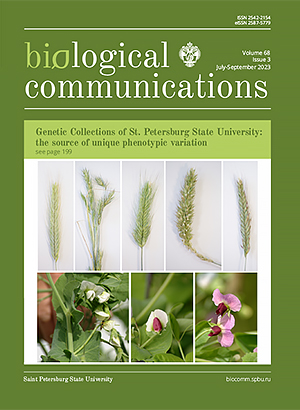Sex-dependent effects of chronic intermittent ethanol treatment in Wistar rats
DOI:
https://doi.org/10.21638/spbu03.2023.304Abstract
Multiple behavioral parameters are associated with vulnerability to alcohol dependence, but the contribution of such factors as cognitive flexibility and sex differences still require further clarification. Our goal was to assess how sex differences mediate relationships between cognitive flexibility, affective state, hierarchy and ethanol preference before and after chronic intermittent ethanol (CIE) exposure in Wistar rats. The results of our study revealed sex-dependent changes in ethanol preference and locomotor activity throughout the time. Anxiety levels were sex-dependently affected by ethanol exposure with a dramatic decrease in ethanol-exposed females. Similarly, striatal tyrosine hydroxylase expression was affected by CIE in a sex-dependent manner, with ethanol-exposed females having higher expression than males. Baseline cognitive flexibility was better in rats with higher locomotor activity and lower anxiety levels but did not correlate with ethanol preference in rats. Taken together, these results are important for understanding sex-dependent alterations in brain and behavior induced by alcohol. This provides important insights into understanding sex differences in the risk for mental disorders.
Keywords:
chronic intermittent ethanol exposure, ethanol preference, alcohol, sex differences, anxiety, cognitive flexibility, tyrosine hydroxylase, striatum, rat
Downloads
References
Downloads
Additional Files
Published
How to Cite
License
Articles of Biological Communications are open access distributed under the terms of the License Agreement with Saint Petersburg State University, which permits to the authors unrestricted distribution and self-archiving free of charge.





